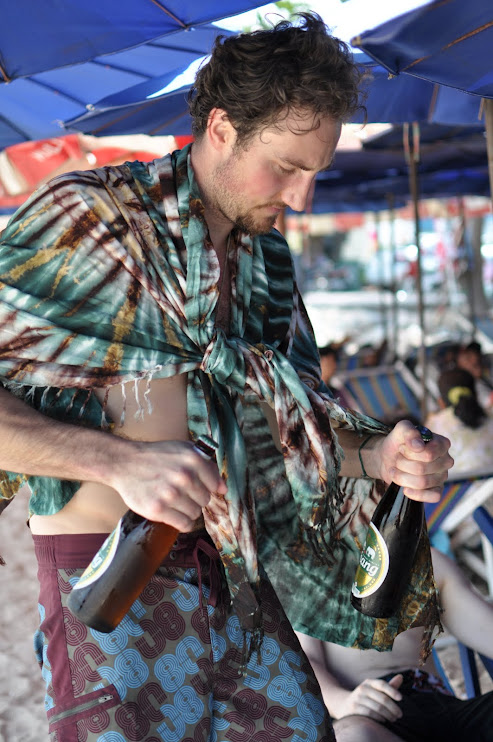 |
| High places, do they drive you to sweat or to feelings of freedom? |
How about meeting a girlfriend's parents? Safe topic? It's not sex or World War II, so I suppose it's alright. Everyone has to do it at some point, right? I cringe at the thought of having to do it in Japanese though. My level's easily conversational, but the problem with gleaning an education through your (youthful) Japanese friends is that you never really learn the politeness level required for meeting 'her' father. It'd be like trying to court Kate Middleton and speaking to her relatives in ghetto slang. You'd have a better shot of just feigning inability. A closed mouth gathers no foot...
Superstition? Who among the western readers can honestly say they don't feel even a moment's hesitation when presented with a ladder to walk under, or when the salt spills, or when that last birthday candle has yet to be extinguished. And let us not forget that this month saw a Friday the 13th, unlucky indeed! Though for me that day, luck decided to take it's January vacation in Tokyo.
Excitement! The body's biochemical response usually starts with the movement of information; your favorite sports team wins, a messenger runs from your eyes to big brain boss man's office, the cranial factories start producing joy juice, and joyous fist-pumping ensues. Well much in the same way, I received a text on Friday morning reading, "dress in conservative business attire today, you're doing interviews." I won't admit to fist-pumping (I was in the middle of a crowded market at the time), but by god after that there was a noticeable skip in my step.
A little background: In Japan the social esteem held for flight attendants is somewhere on par with doctors, lawyers, or firemen. It's seen as a very good job, but like all good jobs there are prerequisites that must be met before attempting an application for this position. Some of these are practical rules like English ability or height requirements (tall enough to reach the overhead compartments and NO, you can't be measured wearing those ridiculous high heels). Others are unwritten for things such as beauty or appearance, but it's unanimous, no one in this country scoffs at person citing flight attendant as their occupation. With this in mind you can understand why competition is stiff. So accordingly, my company offers a class coaching women on how to put your best foot forward during the interview. At the conclusion of the course, these young hopefuls are given the chance to show what they've learned in a simulated interview with real, honest-to-god, (yep you guessed it that's me!) foreigner.
Guidelines? "Pretty much anything goes. See if you can't make them a little uncomfortable, a little nervous to simulate the real thing" my Japanese co-interviewer tells me just before we begin. I'm still in the throes of a braingasm, the words "paid to make these women nervous" echoing off the attic walls, when there's a knock at the door. It's gonna be a good day...













